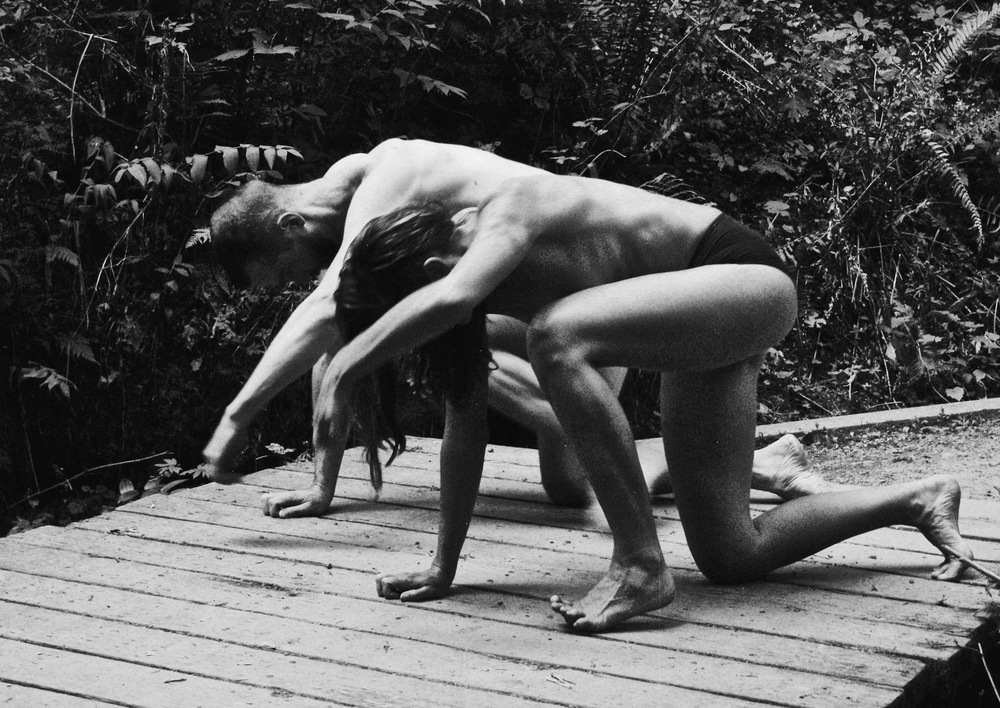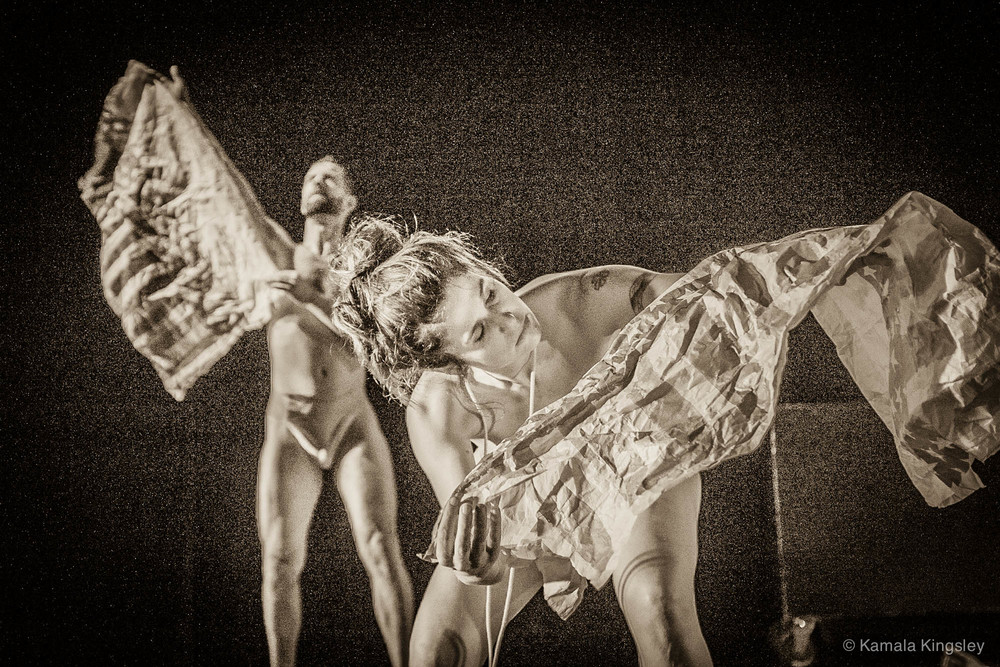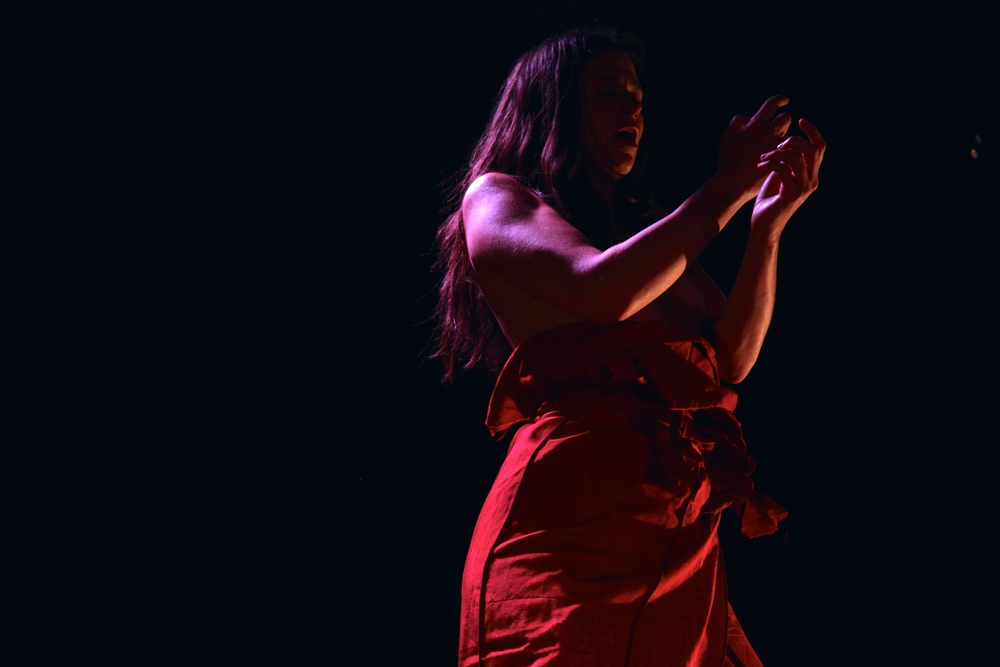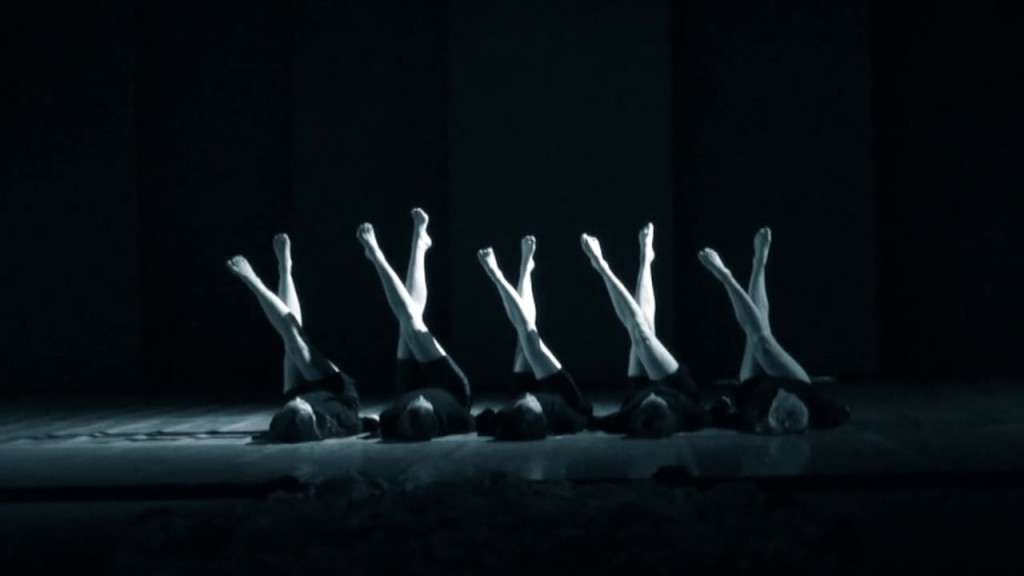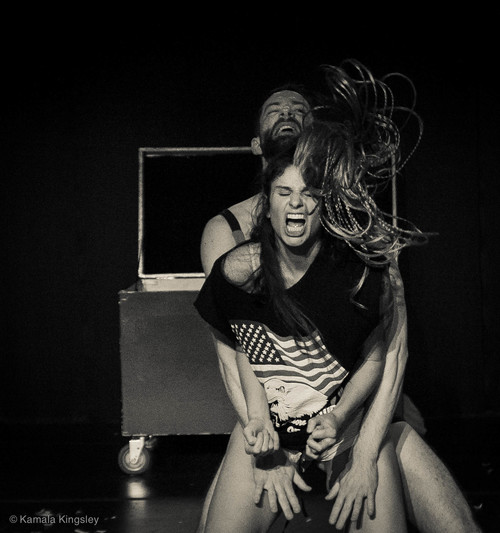Beyond Butoh
An Interview with Mizu Desierto
BY EMMALY WIEDERHOLT
Mizu Desierto is a dance artist based in Portland, OR who has studied Butoh for more than 20 years. This past spring, she mounted the first Butoh College, a month-long series of classes, performances and discussions with acclaimed Butoh artists. She shares her perspective on what Butoh is and where it’s headed.
~~
What is your dance background?
I grew up, like a lot of people, taking dance classes and choreographing shows in my basement. In high school I started studying theater, but I always really loved movement-based theater. I went to a traditional theater school and became a little disillusioned with it. I left and got interested in environmental studies and anthropology, and from there went to an unusual school where I learned about the post-modern movement in dance. This includes Butoh and contact improv, as well as the spectrum of improvisational forms, all of which became of interest. Butoh became something I followed with a passion for about 20 years. It’s been a primary source of inspiration, but it’s not the only form I’ve studied. As I’ve matured as an artist, I’m not even sure what I do looks like Butoh anymore, but I have gratitude and honor toward the lineage that has influenced my work.
What does your current dance practice look like?
I work very much project to project. I also run a nonprofit organization and small venue, which means sometimes I’m more steeped in admin work than in creative work. I’ll go through phases of intensive teaching before I take a break. My tendency has been to create a larger ensemble choreographic work once every couple of years, and then I like to also make small unintimidating pieces for showcases that come up here and there. I also try to be in practice with different collaborators throughout the week, which I get a lot from.
What is the Butoh College and how did it get started?
This past spring was its first year. It basically came about because a couple of my teachers were going to be travelling through the U.S. performing and teaching. One is from Japan, another is a Japanese artist who lives in Germany, and another is from Mexico. Once I knew they were all visiting in proximity to one another, I thought it would be a good idea to produce a month-long festival. I brought in some other teachers of mine as well.
The name ‘Butoh College’ is a play of words, because no one can get a degree in Butoh. But it’s an intensive emersion into training from a wide perspective, like a college. Along with daily workshops from noon to four, there were a series of performances in the small venue I run. We had discussions on various topics, and that comprised our college. We had people attend from around the U.S. and from Canada, as well as many local and regional folks. The average age was 30 with many in their 20s and a few in their 60s.
How would you define Butoh to someone who’s never heard of it or seen it?
It’s still a question after 20 years. However, something that differentiates Butoh from other styles of contemporary performance art is the focus on inner expression and cultivating imagination as a source of movement. There’s also a focus on the spaces in between; it watches the patterns in nature, how something grows and evolves, and studies the spaces between transformation. The artists who master the form are penetrating images through the use of imagination and body.
There’s also an inherent socio-political aspect to it. Because of the time and context of its origins in post-Hiroshima Japan, there’s a rebellion against Westernization and capitalization. It demands a return to the more primal and natural states of being.
Are there common misconceptions about Butoh?
In this stage of any art form’s evolution, a codification has already happened. The birth of any great movement or expression has a period of time when it’s undefinable, and it’s always been Butoh’s intention to be undefinable and constantly move outside of any definition or code. However, like any other art form or genre, the code is already there. You say, “Butoh,” and people envision a naked Japanese male painted all white with a bald head slowly crawling around and making faces.
Something I am currently dealing with, as someone who’s followed the form for 20 years, is a misconception of cultural appropriation. Although there’s probably more Butoh happening on the west coast than in Japan at this point, I perceive there’s an attitude that those of us who aren’t Japanese are participating in a form of cultural appropriation. I wish people knew the history of Butoh was already an East-West dialogue; the founders of Butoh were inspired by German Expressionism, and the founders of German Expressionism were inspired by Japanese wood block prints. Butoh has been a beautiful and evolving dialogue between East and West and, at the same time, is very Japanese in its origin.
Since there are becoming more American and European practitioners, how do you perceive the form has evolved as its migrated?
As it’s become an international art form, the individuals who practice it enter into dialogue with the founding precepts. They are bringing a stamp of their own cultural experience to the art form, just as the Japanese artists were interested in German Expressionism but wanted something Japanese. For instance, there are many Latin American Butoh artists who fuse Latin emotionality, which makes it so different than the Butoh of Japan. Twenty years ago, practitioners were imitating the Japanese. Now, those same artists are making something unique. Some artists in Japan might not necessarily want that to be a direction of Butoh, but others are very excited and supportive of its evolution.
Why do many Butoh-trained dancers feel the need to re-identify themselves as contemporary dancers?
It’s tricky and something many of us are grappling with. There was a period of time when I needed the association; I practiced Butoh and my teachers were from the Butoh lineage. Then, more and more, other dance and theater practices came to influence my work. I’ve found personally that when I’ve tried to let go of the word ‘Butoh’ in labeling my classes or performances, somehow the word is already attached. I am trying to find a balance between honoring the Butoh lineage and inspiration but not claiming it as the sole source of who I am or what I do.
More and more dancers are using the ‘contemporary’ label. Even now in Japan, dancers who grew up training with Butoh masters in Butoh companies will not always call themselves Butoh dancers, but contemporary dancers instead. The word ‘contemporary’ doesn’t mean anything anymore. Language is tricky in dance. In mainstream culture, you say, “dance” and people think of So You Think You Can Dance. It’s a tricky navigation.
Do you perceive the future of Butoh will continue to evolve away from its roots, or stay consistent with the founding intentions?
It feels like both things are happening already. There are some movements toward codification, recording and studying it in the way of other dance techniques. Then there is another movement that is about defying codifications and the cultural restrictions. Both are happening right now, and as to how it will play out, I have no idea.
Any other thoughts?
For me, Butoh has been an energetic source for allowing the experience of dance and community in the very free, absurd and intimate way that is particular to Butoh. One of the projects I’m focused on right now is, in addition to the theater I run, I have a small urban farm in the St. John’s neighborhood in Portland. I’ve done some programs integrating Butoh and permaculture. The goal is to create a dance farm where people come to work on the farm and make dances in relationship to the earth.
Beyond giving me an aesthetic to follow, Butoh has given me a philosophy that I try and embody in my daily living and creative practice. Butoh is a quality of presence that’s empathetic in its relationship with all things. For me, that’s the goal in moving toward community and a more sustainable future: to get everyone dancing and getting dirty.
~~
Mizu Desierto is the artistic director of Water in the Desert (WITD) and The Headwaters Theatre. She is a performer, choreographer and educator whose work explores themes of identity, truth, culture, ecology and transformation. Mizu’s artistic works have been commissioned by The City of Portland and Portland Center Stage, and her projects have received funding from the Arizona Commission on the Arts, Oregon’s Regional Arts & Culture Council, Portland Development Commission, Oregon Arts Commission, The Multnomah County Cultural Coalition & The Oregon Cultural Trust.
To learn more, visit www.witd.org.

